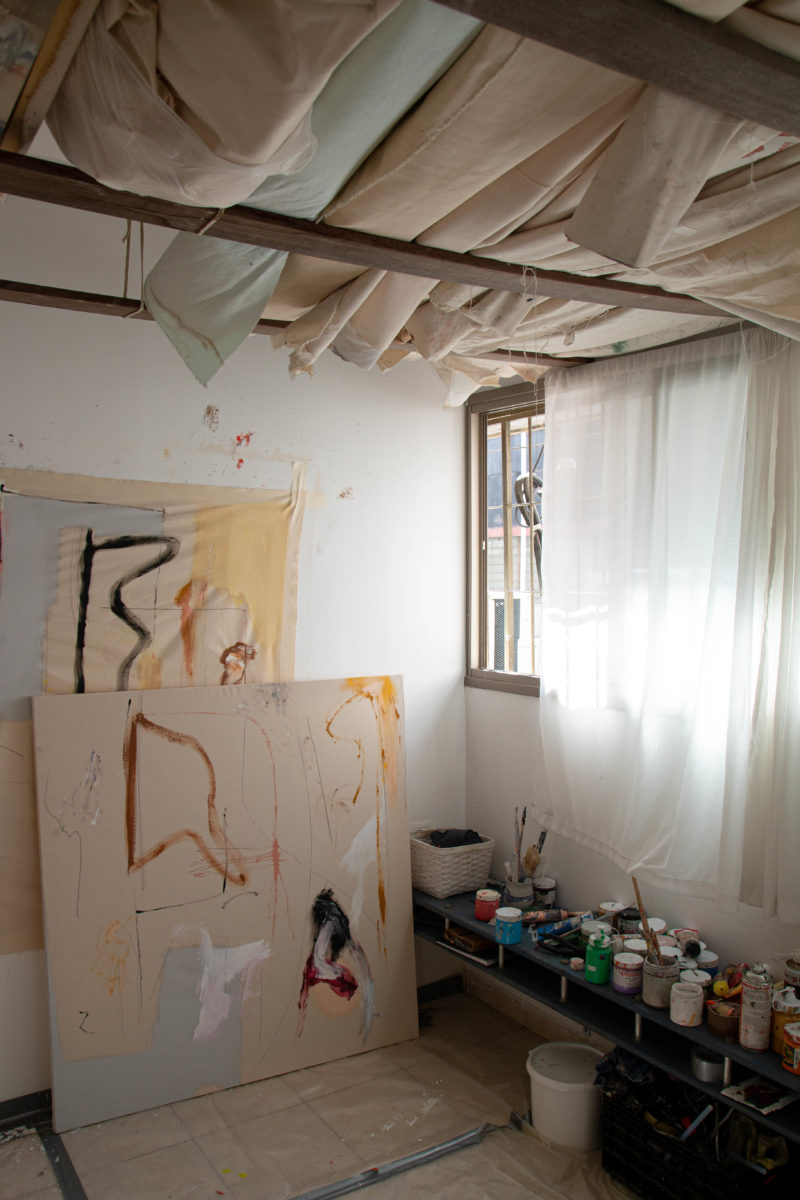First of all, have you always been interested in the arts?
For most of my life I never had any interest in the arts. I had problems in schools and never really found my place. After I finished my army service (which is mandatory in Israel), I decided I wanted to study film. Guess I just really liked films at the time. I actually really enjoyed it, but I had some issues with the making side of it. At the end of the first year, I realised filmmaking was not the medium that answered my passions and interests.
In the second year I took some courses in art theory, which I loved. Eventually I decided to quit school, mainly because of money issues and instead rented a studio and educated myself with the help of other artists and people from within the art field.
How has your artistic practice evolved throughout the years? Do you see a hierarchy within your practice?
When I was 25 I entered film school. At the end of the first year I realised I was missing a sense of immediacy and directness and really didn’t find myself in the filmmaking process: production, writing, logistics etc .., I started doing collages and had a lot of fun, it was kind of preparation for me before I got into painting. I was experimenting more and more with colours and less with glueing paper and the transition into painting was natural.
Do you plan what you are going to create before doing so?
When I start a painting I have some vague sense of composition and colour scheme, but I never actually sit and plan. The decisions you make while painting is what makes the painting process so much fun and exciting.

How would you describe your aesthetic? Where do you get your narratives from?
My main goal in painting is to deliver a sense of immediacy and to find ways to bring the values I find important in life into the painting. This has a big effect on my aesthetic, materials, compositions and colour scheme. I guess I want people to see beauty and sensitivity in it. I believe when they see those things it means I touched them on a deeper level and that I found a way to manifest values that are difficult for me to put in words and relate these to them.
Who has influenced your practice?
The people that influenced, and are still influencing my practice the most, are my Art school philosophy professor and one of my best friend’s dads, who is an artist and has really helped me on my journey. Also, a bunch of Israeli artists such as Raffi Lavie, Lea Nikel, Joseph Zaritski and international ones, of course.
What do you want people to take from your work when they view the work?
I don’t really think about the audience while painting, in the sense that it is influencing my process. I do want people to experience my paintings as what they are – a combination of lines and colours and not to try and make sense of it in the same way you experience a figurative painting, which holds the same values as abstract painting, with an additional layer of narrative. I just hope they will enjoy and be excited about the beauty and sensitivities I try to deliver and through those aspects, to communicate myself.
What’s next? Any upcoming projects, collaborations, exhibitions?
What’s the best piece of advice you’ve ever received?
Work, work, work.